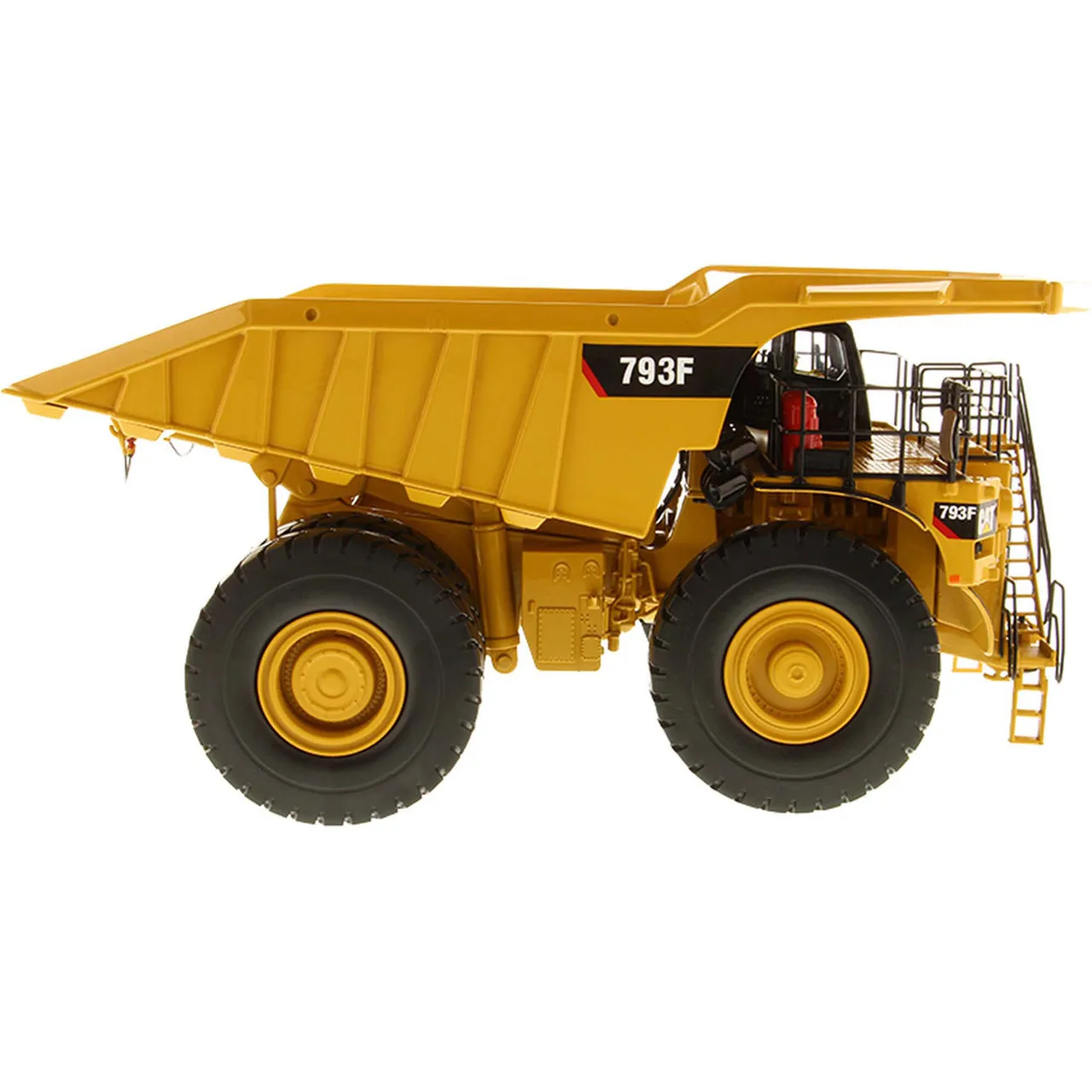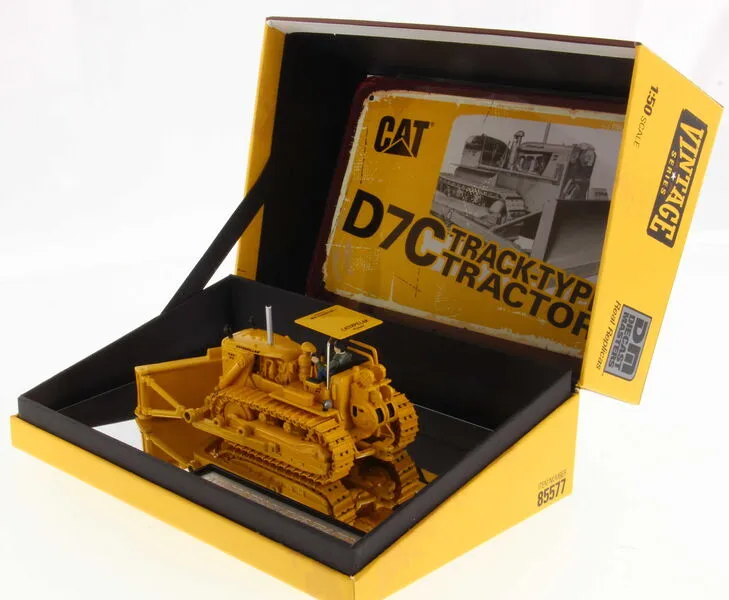The Allure of Caterpillar Diecast 1 50 Models
Caterpillar diecast 1 50 scale models capture the hearts of collectors and enthusiasts worldwide. These miniature replicas of heavy machinery offer a unique blend of historical significance, precision engineering, and collectibility. The appeal extends beyond mere aesthetics, drawing individuals into a world where craftsmanship meets passion. These models are not just toys, they are detailed representations of the iconic Caterpillar brand. Collecting these models offers a tangible connection to engineering marvels and a nostalgic journey. Whether you are a seasoned collector or just starting, understanding the nuances of these models enhances the appreciation for their craftsmanship and value. The appeal lies in the perfect blend of scale accuracy, detailed features, and the historical relevance of the Caterpillar brand, making them highly sought after in the diecast community.
Historical Significance
The Caterpillar brand has a rich history, and their diecast models reflect this legacy. These models serve as miniature chronicles of construction and mining advancements. Each model tells a story of innovation and engineering prowess. The historical significance extends to the specific machines. These models offer a window into the evolution of heavy machinery design. By collecting these models, enthusiasts gain a deeper appreciation for the history of construction and the significant impact of Caterpillar equipment across various industries. These diecast models are not just replicas, they are historical artifacts that showcase the evolution of the Caterpillar company and its impact on global infrastructure. The 1 50 scale allows for detailed reproduction of machinery, making them valuable historical records.
Early Caterpillar Machinery

Early Caterpillar machinery, often represented in diecast form, is a testament to the company’s pioneering spirit. These models capture the essence of a time when construction and earthmoving were rapidly evolving. They are reminders of the ingenuity that shaped the landscape of modern infrastructure. The 1 50 scale gives enthusiasts a detailed view of these historical machines. Collecting these models gives enthusiasts a deeper understanding of the engineering challenges. Owning these early models is like owning a piece of history. The early machines, with their distinct features, represent a crucial phase in the development of heavy equipment. Owning and appreciating these models highlights the company’s rich heritage and groundbreaking innovations.
Evolution of Diecast Models
The evolution of Caterpillar diecast models mirrors the advancements in diecast manufacturing itself. Early models, while charming, often lacked the detail and precision found in their modern counterparts. Modern models boast intricate designs. The manufacturing process has advanced, resulting in highly detailed and accurate replicas. Diecast technology has improved, allowing for more complex designs and features. The evolution showcases the advancements in diecast production techniques, from basic molds to sophisticated processes. The progression in detailing and accuracy highlights the continuous pursuit of perfection. The detailed reproduction is amazing when you consider the size of these models.
Material and Construction
The quality of a Caterpillar diecast 1 50 model is heavily influenced by the materials and construction methods used. The selection of materials and precision in the manufacturing process are essential. The durability, appearance, and collectibility depend on these factors. High-quality models are typically crafted from diecast metal, which gives them weight and a realistic feel. The construction process involves intricate die-casting and assembly techniques. This ensures durability and the highest level of detail. Understanding the materials and construction is crucial for assessing a model’s quality. The choice of materials affects both the model’s longevity and its value. It also contributes to the overall aesthetic appeal of the model.
Diecast Metal Composition

Diecast metal, primarily a zinc alloy, forms the backbone of most Caterpillar models. This material offers an excellent balance of strength, detail retention, and cost-effectiveness. The composition of the metal affects the model’s durability and finish. Quality models use high-grade alloys. The weight and feel of a diecast model add to the tactile experience for collectors. The metallic composition allows for fine details and intricate designs. Understanding the metal helps in appreciating the manufacturing process. The composition of the diecast metal contributes significantly to the model’s quality and lifespan.
Manufacturing Process
The manufacturing of a Caterpillar diecast 1 50 model is a complex process, involving several stages. The process typically starts with the creation of molds, followed by die-casting the molten metal. After casting, the models go through processes. These include cleaning, painting, and assembly. Quality control ensures the models meet the required standards. The painting techniques used significantly impact the appearance. Intricate detailing and assembly require precision. The manufacturing process determines the quality and accuracy of the model. The meticulous attention to detail makes these models so appealing to collectors.
Scale Accuracy and Detailing
Scale accuracy is a critical aspect of Caterpillar diecast 1 50 models. Precision in scaling ensures that the models accurately represent their real-life counterparts. The scale of 1 50 allows for detailed reproduction. This level of detail makes the models highly attractive to collectors. Collectors value models that maintain the true proportions of the original machinery. Accurately scaled models enhance the overall collectibility. The attention to detail extends to every aspect of the model, from the paint to the decals. The goal is to accurately replicate every element. The precision in detail makes these models stand out.
Precision Engineering

Precision engineering plays a crucial role in the creation of Caterpillar diecast 1 50 models. This involves meticulous design, tooling, and manufacturing processes. The models accurately represent the real-world machines. Precision engineering results in functional parts and realistic movements. Quality models feature movable components. The precision in engineering enhances the realism and value of the models. The engineering extends beyond the visual aspects. Precise engineering is essential for the model’s durability and functionality. These models are a testament to the skills involved in manufacturing.
Realistic Features
Realistic features are an essential part of a Caterpillar diecast 1 50 model. These features enhance the overall realism and appeal to collectors. Models often include movable parts. The features also add to the functionality. Attention to detail in the cab, tracks, and other components enhances the model. Realistic features elevate the collecting experience. These features transform the models into detailed replicas. The combination of precision and detail leads to highly sought-after models.
Collectibility and Value
The collectibility of Caterpillar diecast 1 50 models is a major draw for enthusiasts. Many factors influence the value of these models. Rare and limited-edition models are highly sought after. The condition of the model is crucial. Understanding the factors that influence the collectibility helps collectors make informed decisions. The demand for specific models varies. Some models appreciate over time, representing sound investments. The collecting experience is rewarding. Collectors share a common passion for these models.
Factors Influencing Value

Several factors affect the value of Caterpillar diecast 1 50 models. Rarity, condition, and demand are key determinants of value. Limited edition models typically command higher prices. The original packaging and documentation are also significant. The model’s condition is important. The history of the model affects its value. Understanding these factors helps collectors make informed decisions. The market conditions can also influence the value of the models. Collectors should stay informed about the market to get the best models.
Rarity and Limited Editions
Rarity and limited editions significantly impact the value of Caterpillar diecast models. Limited editions are produced in small quantities. These models are highly sought after. Their scarcity increases their value. The rarity of these models makes them valuable. Collectors are always on the lookout for rare editions. Identifying and acquiring these models can be challenging. These models represent the pinnacle of collectibility. Limited editions are often released to commemorate events. The unique features and details contribute to their collectibility.
Display and Preservation
Proper display and preservation are essential for maintaining the value and enjoyment of Caterpillar diecast 1 50 models. Displaying models in a safe environment protects them from damage. Proper storage prevents deterioration. Careful handling and storage are critical for preserving their condition. By taking steps to protect the models, collectors can ensure their longevity. Displaying the models enhances their beauty. Displaying allows the collector to showcase their collection. Preservation is also an important aspect of collecting. These models are investment pieces and they need to be stored properly.
Showcasing Your Collection

Showcasing your Caterpillar diecast 1 50 models allows you to share your passion with others. Proper display enhances their visual appeal. Display cases protect the models while showing them off. Creative displays can highlight your collection’s unique characteristics. Consider the lighting and arrangement when displaying. Organize your collection to tell a story. The display creates a conversation point. Showcasing your collection allows you to celebrate your hobby.
Proper Storage Techniques
Proper storage techniques are essential for preserving the condition of your Caterpillar diecast 1 50 models. Store the models in a cool, dry environment. Avoid direct sunlight. Using display cases is a good way to keep the models safe. Store the models in their original packaging. Regular cleaning and maintenance prevent the accumulation of dust. Proper storage techniques enhance their lifespan. Correct storage maintains the value of your collection. Safe storage ensures that your models remain in top condition.
